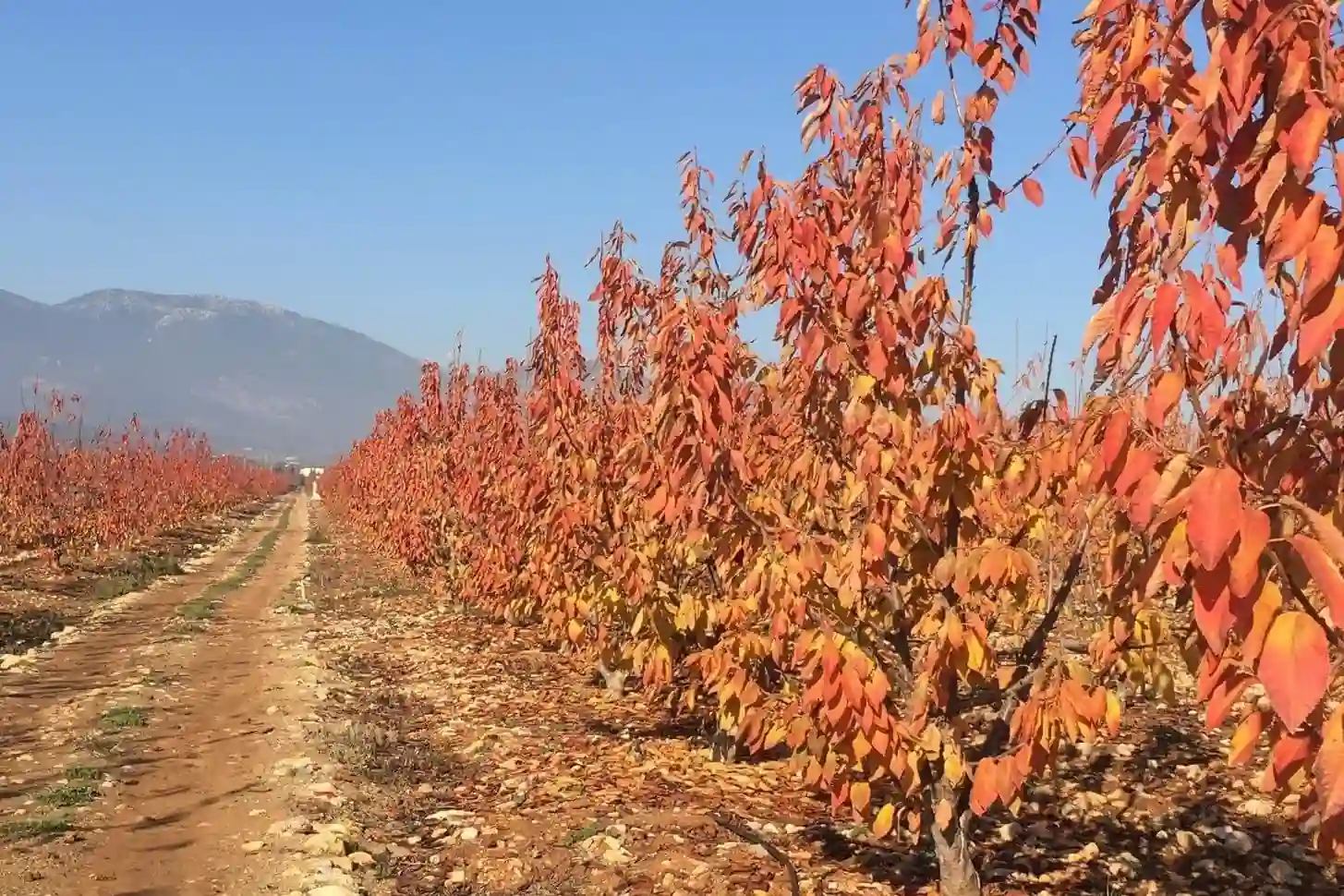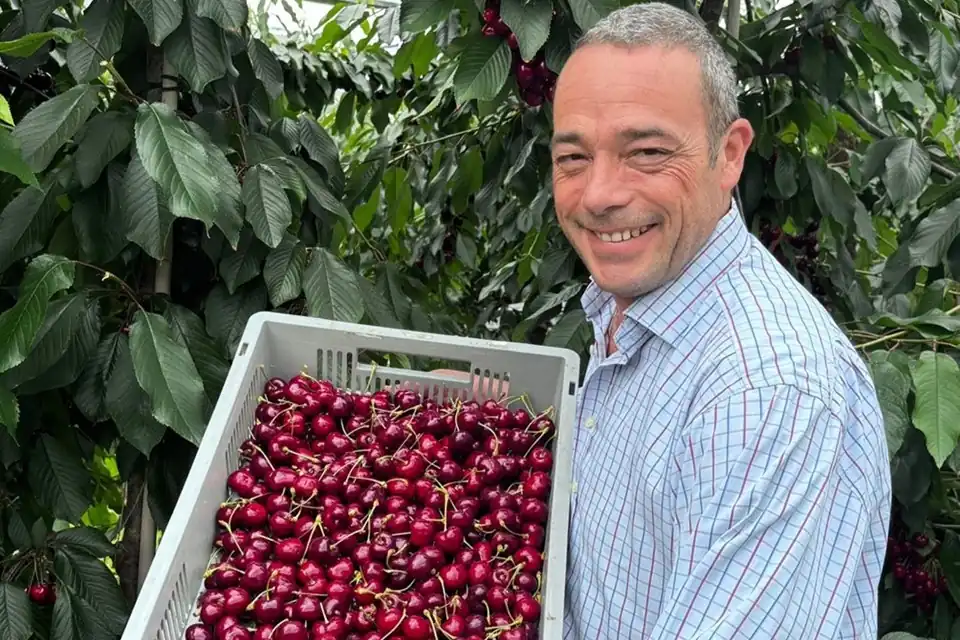The decline in cherry prices in China is forcing a reconsideration of orchard costs; an important but often overlooked aspect is irrigation.
Over-irrigation is very common, which means spending more on energy, having negative effects on the plant, decreasing quality, requiring increased weed control and fertilization, raising labor costs, and increasing opportunity costs.
Paradoxically, the practice of regulated deficit irrigation (RDI) with DES is also widespread, especially in the post-harvest period, to save water.
The effects are highly damaging, as demonstrated by a study born out of concerns about "policemen." The solution? It lies in using tools to monitor the plant's water status.
Impact of the Chinese Market Crisis
Recently, the Chilean cherry industry has been shaken by the drastic price drop of the fruit in China, the main buyer of this agricultural product.
Among the factors cited to explain this unprecedented decline, which has dropped by up to 50% compared to projected values for the current season, are overproduction and excessive exports.
Shipments reached a record volume of over 600,000 tons, representing an increase of 50-60% compared to the previous season.
Before the trade crisis, the cherry industry was highly optimistic about its commercial prospects, estimating an export level of over 700,000 tons for the 2026/27 season.
Unfortunately, the complex situation has brought back bitter memories for other fruit-growing sectors, where the rapid expansion of cultivated areas and export volumes led to sudden price drops, jeopardizing orchard profitability.
Beyond the commercial strategies that the country and the fruit export sector can develop to counter the price drop for our cherries in China, it is essential to rethink the current orchard production model.
The importance lies in the fact that profitability does not depend solely on revenue but also on costs, an aspect that must be examined in detail.
 Figure 1. Prof. Arturo Calderón-Orellana works in the Laboratory of Water Relations in Fruit Crops at the Department of Plant Production, Faculty of Agronomy, University of Concepción, Chile.
Figure 1. Prof. Arturo Calderón-Orellana works in the Laboratory of Water Relations in Fruit Crops at the Department of Plant Production, Faculty of Agronomy, University of Concepción, Chile.
A Look at Often Overlooked Costs
A frequently overlooked cost, yet increasingly important for orchard profitability, is energy consumption related to automated irrigation systems.
For example, according to data from the National Irrigation Commission, using a technical irrigation system in a sector with a 10 kW electric pump for 5 hours a day would consume 1,500 kWh per month (CNR, 2022).
In October 2024, the average cost per kWh in Chile was $192 (approximately €177.50), meaning that the operating costs of the irrigation system for a single irrigation sector amount to nearly 300,000 pesos (around €315) per month.
In 2024, electricity bills in Chile increased between 12% and 22%; the most affected regions were Atacama, Coquimbo, and Metropolitan.
Impact of the Climate Crisis
The climate crisis resulting from global warming will bring, in the medium term, lower water availability for irrigation, higher evaporation demands from orchards, and consequently, an increase in water costs and irrigation system operation expenses.
A study by the University of Chile showed that, between 1970 and 2020, groundwater extraction in central Chile increased by 1,684% (Taucare, 2023).
Excessive exploitation of aquifers increases the depth at which water is found, meaning more powerful and energy-intensive pumps will be required to access it.
Extracting water from a depth of 30 m is not the same as extracting it from 100 or 200 m. This situation is not unique, as similar events have been documented in Spain and California (USA).
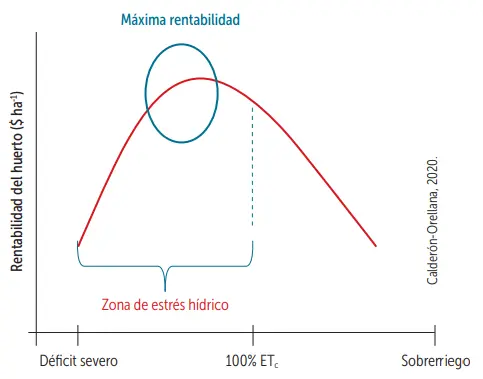 Figure 2. Effect of irrigation strategy on profitability.
Figure 2. Effect of irrigation strategy on profitability.
Pre-Harvest Over-Irrigation
In Chile, irrigation practices in fruit cultivation are still largely determined by subjective methods, such as soil observation and handling with test pits, plant appearance, or historical irrigation scheduling.
Although more orchards have incorporated objective techniques in their decision-making process, such as the use of capacitive probes to measure soil moisture or agro-meteorological stations to estimate crop evapotranspiration, data analysis, equipment maintenance, and the use of these technologies remain inadequate.
As a result, in central-southern Chile, between flowering and harvest, cherry orchards are more commonly found in a state of over-irrigation rather than water stress.
For instance, for a mature cherry orchard in the O'Higgins region, the crop's evapotranspiration calculation during the season may range between 6,500 and 8,000 m³ per hectare, while the water usage for irrigation in many orchards typically reaches around 10,000 m³ per hectare.
The impact of pre-harvest over-irrigation on orchard profitability is varied and involves physiological, logistical, and commercial aspects that are worth at least examining.
For example, an excessively irrigated orchard often suffers from hypoxia (low oxygen concentration in the soil), which negatively affects stomatal conductance, root and shoot growth, and fruit quality. In Burlat cherry trees on various rootstocks, exposing plants to waterlogging conditions for a total of seven days reduced the leaf photosynthetic rate by over 70% (Pérez-Jiménez et al., 2018).
Likewise, excessive irrigation negatively affects the soil microbiota, increases the availability of elements that can be toxic to plants, such as iron and aluminum, and raises the costs of weed control, fertilizers, fungicides, and human resources, as access tends to be more limited.
It is worth noting that excessive use of water for irrigation also increases opportunity costs, a concept defined as the costs of the discarded alternative when making a decision, and also includes the benefits that could have been obtained if that option had been chosen. In other words, the excess water used for irrigation could have been sufficient to properly irrigate another crop and generate higher revenues.
In a scenario of market uncertainty, reduced water availability, higher energy costs, and increasing water demand, every drop of water used unnecessarily matters.
As a result, it is crucial, as a primary objective, to avoid the associated costs of excessive irrigation until harvest. In short, the cost of excessive irrigation may even be greater than that of insufficient irrigation.
What happens to cherry trees' water after harvest?
Deficit irrigation with DES: In Chile, many cherry orchards are significantly irrigated less after harvest. In practical terms, this means that irrigation applications are reduced in frequency and quantity.
The objective varies, as some producers, especially in areas with low water availability, seek to save water to irrigate other fruit trees that have not yet been harvested. On other occasions, the reduction in irrigation is due to the desire to anticipate the leaf senescence period and the plant's entry into endodormancy.
Water stress monitoring
Whatever the reason, the practice of "watering less" must be associated with constant monitoring of the trees' water status or at least that of the soil. Otherwise, plants risk being exposed to prolonged periods of severe water stress, which could compromise key physiological processes that determine the quantity and quality of the next season's fruit.
Our work in cherry orchards from Rancagua to Los Ríos has highlighted a trend toward generating excessive water stress lasting 1 to 3 months. For example, in the Ñuble region last season, our laboratory conducted an ecophysiological irrigation monitoring study on three plots of Lapins and Sweetheart varieties on Colt and Mazzard F12/1 rootstocks.
The reduced water availability starting in January forced growers to reduce weekly irrigation, unfortunately without proper monitoring of plant water status. Concerned about understanding the impact on their mature orchard with high percentages of "pasma" (photo 1, page 23), they asked us to conduct physiological evaluations starting from harvest, as they suspected that the plants might be suffering from moderate or severe water stress.
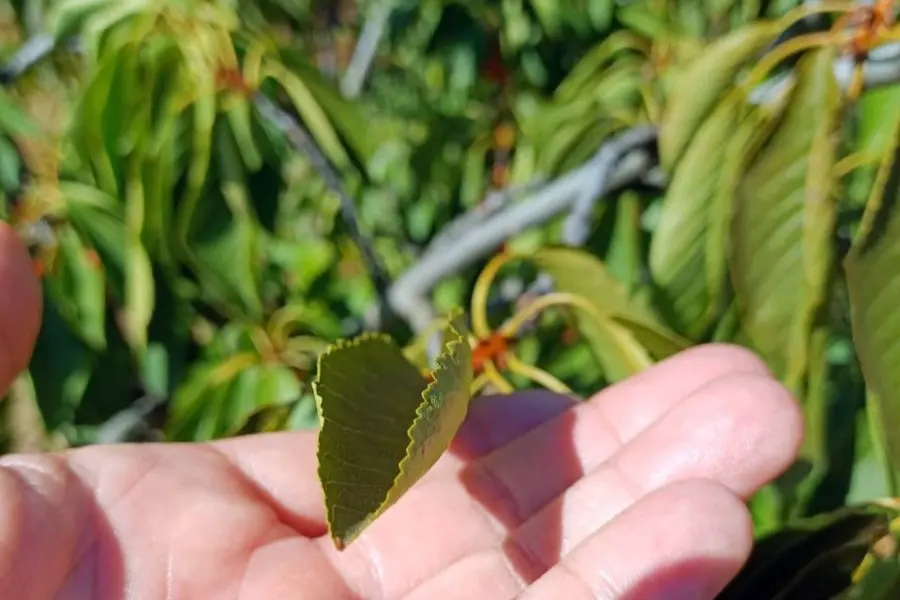 Figure 3. The phenomenon known as "pasma" raised suspicions that the cherry trees were suffering from moderate to severe water stress.
Figure 3. The phenomenon known as "pasma" raised suspicions that the cherry trees were suffering from moderate to severe water stress.
Consequences of water stress
The result was surprising, as the plants entered a state of severe water stress (midday stem water potential < -1.5 MPa) only a few weeks after fruit harvest, reaching a condition of very severe water stress (midday stem water potential < -2.0 MPa) from February onward.
Water stress of this magnitude is sufficient to induce stomatal closure above 70%, thereby limiting photosynthesis and the accumulation of reserve carbohydrates. In the aforementioned ecophysiological study, the stomatal conductance of the leaves was close to zero from the second week of February until the last measurement taken in the last week of March.
This means that the plants remained for at least 30 days without photosynthesis, with minimal transpiration, and therefore with leaves at high temperatures (higher than the air temperature), favoring physiological processes that limit proper carbohydrate accumulation, such as photorespiration, photoinhibition, and photooxidation.
Descriptive analysis of different soil pits during the following spring revealed a lower number of fine and very fine roots (about 10% fewer) in the plot with the most severe post-harvest water stress.
Relationship between reserve carbohydrates and vegetative and reproductive development in cherry trees
Cherry trees are fruit-bearing trees, and trees store large amounts of carbohydrates in their roots, trunks, and shoots, unlike vines, which have a low carbohydrate storage capacity.
After cherry fruit harvest, the primary source of carbohydrates is the reserve organs; adequate storage ensures normal root growth, flowering, bud break, and early fruit development. Additionally, after harvest, buds continue the differentiation process, during which floral primordia and future flower parts (sepals, petals, anthers, and pistils) begin to form.
The relationship between reserve carbohydrates and vegetative and reproductive development in cherry trees is clear, as strong associations have been reported between bud sugar concentration (fructose and sucrose) and trunk diameter (Measham et al., 2014).
Post-harvest irrigation strategies
So it is not true that the plant can do without water after the fruit harvest. Avoiding excessive water stress is directly related to high flowering and fruiting, as well as proper fruit growth in the following season.
In fact, atmospheric evaporative demand in central Chile is usually higher in the months following harvest (January, February, and March). Naturally, irrigation with controlled deficit using DES is not the same as controlled deficit irrigation (CDI), where the timing, severity, and duration of water deficit are precisely managed.
CDI has played a fundamental role in fruit-producing countries with limited water availability for irrigation. In cherry trees, this practice is not recommended between flowering and harvest, as it can compromise fruit size, bud induction for the next season, the accumulation of soluble solids (sugar/acid balance), and even induce vascular splitting during the ripening weeks.
Experiences in Chile and Spain have shown that cherry orchards can be irrigated in a deficient but controlled manner. Our work at the Faculty of Agronomy of the University of Concepción with Olivos Spa and Cerasus through a regional FIA project has confirmed that applying a moderate CDI in cherry trees can induce irrigation water savings of close to 20% without compromising fruit quality, even in early cultivars like Santina (Calderón-Orellana and Olivos, 2024).
In short, post-harvest water can be saved through CDI, but reducing irrigation without any control during periods of peak water demand makes no sense.
What can be done?
First of all, if the goal is to irrigate better to achieve higher profits, it is essential to avoid over-irrigation throughout the season. This goal can only be achieved through the modernization of water management within farms.
The determination of crop evapotranspiration (ET c) using reference evapotranspiration (ET 0) calculated with the Penman-Monteith equation and crop coefficients (K C) establishes the baseline that should not be exceeded. Using more water than the orchard evaporates into the atmosphere means sinking the profitability of the operation.
A fundamental requirement in the application of this technology is that weather stations are correctly installed, maintained, and calibrated to calculate ET 0. If properly set up, all areas within the orchards near security cabins, offices, warehouses, forests, roads, and irrigation channels are immediately excluded, as the FAO Penman-Monteith model estimates the ET of an area cultivated with grass species.
Location of ET 0 stations
Therefore, the ET 0 station must be located in a grass field cultivated with a reference crop no taller than 12 cm, without shade for 365 days a year, and under optimal agronomic management conditions, among other considerations (Zotarelli et al., 2010).
This approach is quite simple to implement, provided there is enough water for irrigation, but what happens if water is not available?
Managing water scarcity
If water is scarce, water only if the plant needs it or apply CDI. In both cases, the physiological monitoring of the trees' water status between irrigations becomes a technical necessity.
The standard and most reliable measurement to achieve this goal is the stem water potential, a measure that determines the level of plant dehydration. In this way, situations of excessive water stress can be avoided before visual symptoms such as “spoon-shaped” leaves (photo 2, p. 23), leaf chlorosis (yellowing of leaves), reduced expansive growth of leaves, shoots, fruits, or roots, and leaf drop appear.
Measuring tools
Nowadays, at least three types of measuring instruments are available for field use for this purpose. These include:
- The pressure chamber (“Schölander pump”, photo 3, p. 24)
- Plant microtensiometers (photo 4)
- Plant psychrometers
Although all three devices have proven to be sufficiently accurate in determining stem water potential, the first two have had a higher adoption rate by the horticultural industry and research centers worldwide.
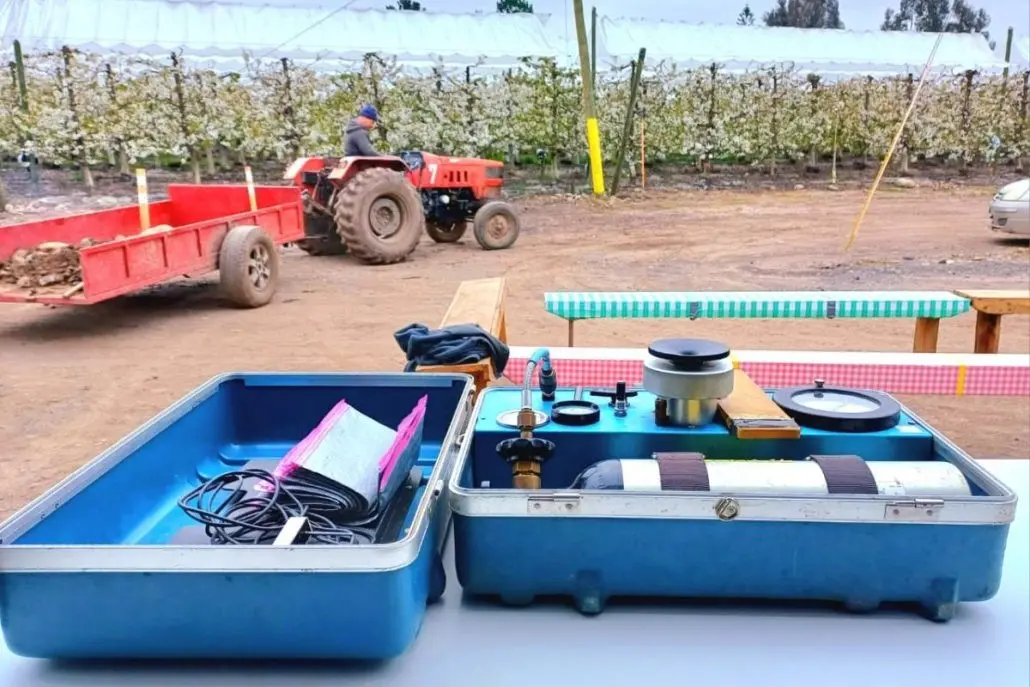 Figure 4. Pressure chamber or “Schölander pump” in a cherry orchard (Prunus avium L.) in the O'Higgins region.
Figure 4. Pressure chamber or “Schölander pump” in a cherry orchard (Prunus avium L.) in the O'Higgins region.
The pressure chamber
The pressure chamber has been used for over 60 years to measure water stress in various fruit crops, such as grapes, cherries, plums, blueberries, peaches, kiwis, walnuts, almonds, and apples, among others.
It is undoubtedly the tool with the strongest scientific and technical support as an indicator of the water status of fruit plants. Among its major advantages are:
- Ease of use
- Simple operation and maintenance
- Energy independence (does not require electricity)
- Ability to perform multiple measurements, which allows for consideration of the spatial variability of the orchard (Calderón Orellana, 2021)
Advantages and disadvantages
In other words, water stress can be measured in many plants to accurately represent the water conditions of the garden, rather than just in one or a few plants.
Measurements of stem water potential are generally more consistent and in line with irrigation practices compared to those taken with other tools, such as dendrometers, porometers, sap flow meters, multispectral images, and IR thermometers.
The great advantage of measuring stem water potential is that this variable integrates the plant's response not only to soil water content, but also to the magnitude of atmospheric evaporation demand.
Among the disadvantages of using the pressure chamber are:
- The dependence on an operator who must perform the measurements
- The need to train them to ensure correct field evaluation (Calderón-Orellana and Olivos, 2024)
The Plant Microtensiometer: A Tool for Measuring Water Potential
The plant microtensiometer is currently one of the most sophisticated tools, capable of providing water potential measurements as accurate as those obtained with the pressure chamber (Lakso et al., 2021).
Its greatest advantage lies in the ability to make real-time and continuous measurements, allowing daily and constant monitoring of the severity of water stress (Calderón-Orellana and Olivos, 2024).
Currently, one of its biggest disadvantages is the lack of representativeness, as its cost makes it difficult to deploy multiple monitoring stations within an orchard or farm.
This issue is similar to that of soil moisture measurement stations, where it is assumed that the soil associated with one or more sampled plants represents the water conditions of the entire plot or orchard.
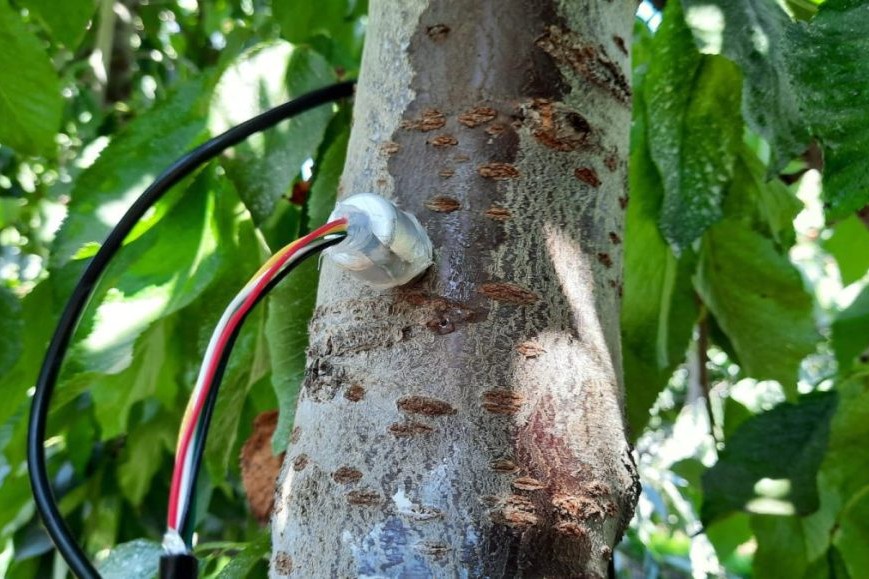 Figure 5. Plant microtensiometer installed on a cherry tree (Prunus avium L.) cv. Coniglio in the O'Higgins region. Source: Olivos Spa.
Figure 5. Plant microtensiometer installed on a cherry tree (Prunus avium L.) cv. Coniglio in the O'Higgins region. Source: Olivos Spa.
Installation and Usage Considerations
Photo 4. Plant microtensiometer installed on a cherry tree (Prunus avium L.) cv. Coniglio in the O'Higgins region. Source: Olivos Spa.
It is very important to emphasize that there is no perfect tool for irrigation management, as all available equipment has limitations in terms of functionality or interpreting the data.
It is crucial to understand that all equipment for physiological assessment of water status in plants requires the training of specialized professionals, as improvisation is costly.
A technique used poorly provides erroneous data that leads to wrong decisions, wasting company resources, especially time.
Sustainability and Water Resource Management
Today, as water scarcity is becoming a significant issue for Chilean agriculture, farmers and producers must develop a culture of water austerity, even those with sufficient water.
Only in this way can Chilean fruit growing be sustainable not only from an environmental perspective but also commercially.
Dr. Arturo Calderón-Orellana
Laboratory of Water Relations in Fruit Crops
Department of Plant Production
Faculty of Agronomy, University of Concepción, Chile
Source: Redagricola
Cherry Times - All rights reserved










